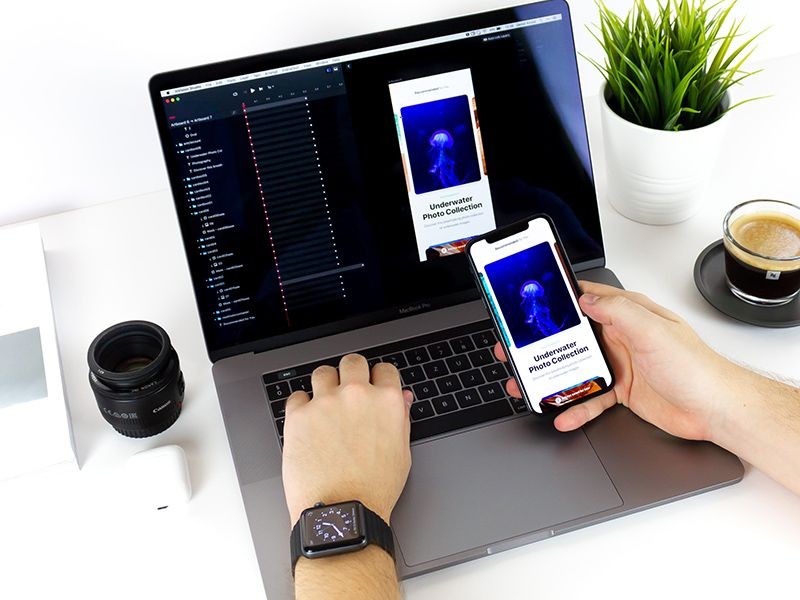The digital era has revolutionized how we interact with our world, especially through the devices we carry in our pockets. At the heart of many of these devices is Android, the world’s most popular mobile operating system. Its open nature has paved the way for millions of apps that serve almost any purpose one can think of. From aspiring developers to seasoned veterans in the field, understanding Android app development is crucial for anyone looking to make an impact in the mobile market. In this comprehensive guide, we’ll walk you through the fundamental steps of creating your first Android application, from setting up your development environment to publishing your app on the Google Play Store.
Post Contents
Understanding the Basics
Before jumping into coding, it’s essential to ground yourself in the basics of Android app development. Android apps are primarily developed in Java or Kotlin – two powerful and versatile programming languages. Understanding the Android SDK (Software Development Kit) is also critical, as it provides you the tools and APIs necessary to develop, test, and debug your apps for Android. Familiarity with XML for designing app layouts and an understanding of the Android app lifecycle are foundational knowledge every developer should possess. These elements form the backbone of Android development, enabling you to build functional and responsive applications that enhance user experience.
Setting Up the Development Environment
The first step toward Android app development is setting up an appropriate development environment. This involves installing Android Studio, the official Integrated Development Environment (IDE) for Android app development. Android Studio provides all the necessary tools for developers to code their apps efficiently, from a code editor to a powerful emulator for testing apps across different Android devices. To get started, download and install Android Studio from the official Android developer website. After installation, open Android Studio and follow the setup wizard to install the Android SDK and any other necessary components based on your development needs. This process may take some time, depending on your internet connection and the components you select. Having a properly configured development environment is crucial for a smooth and efficient development process, as it reduces potential issues and downtime.
Diving Into App Development
Once your development environment is set up, it’s time to start the actual process of app development. This stage involves multiple steps, from ideation and design to coding, testing, and deployment. Initially, you should focus on defining the purpose of your app and understanding the needs of your target audience. This understanding will guide your design choices and functionality features. After the planning phase, the next step is to design the user interface (UI) and user experience (UX) of your app. Here, tools within Android Studio, like the layout editor and the vector asset studio, can be incredibly helpful. Coding your app comes next, where you bring your design to life by writing code in Java or Kotlin. Throughout this process, make use of Android Studio’s powerful debugging tools to ensure your app is free from errors. Finally, after thoroughly testing your app across different devices and screen sizes, you are ready to deploy your app on the Google Play Store, making it available to users worldwide. Each step in this development process is crucial for creating a successful Android app.
Programming with Java/Kotlin
Choosing the right programming language is a key decision in Android app development, and Google supports two primary languages for this purpose: Java and Kotlin. Java has been the standard and most widely used language in Android development for years, known for its portability, accessibility, and robust community support. It’s a great choice if you’re looking for extensive documentation and community resources. On the other hand, Kotlin, a newer language compared to Java, is gaining popularity for its concise syntax, safety features, and interoperability with Java. Kotlin’s modern language features make it a preferable choice for many developers, especially those focused on developing modern Android apps with less boilerplate code. Both languages have their own set of advantages, and your choice should depend on your project requirements, existing skills, and the specific features you want to implement in your app.
Integrating Android APIs
Android offers a wide range of APIs that developers can utilize to incorporate features like Google Maps, push notifications, connectivity with wearables, and much more. For instance, using the Location API, apps can offer personalized suggestions based on the user’s current location. Similarly, the Camera API allows for direct interaction with the device’s camera, enabling apps to capture photos or videos within the app itself. By leveraging these APIs, developers can create a more immersive and interactive experience for users, making the app not just a tool but a part of the user’s daily life. It’s crucial to identify which APIs are most relevant to your app’s functionality and user needs, and to implement them in a way that is both efficient and user-friendly. Proper integration of Android APIs can significantly set your app apart in a crowded marketplace.
Publishing Your App
Publishing your Android app is a critical phase in the Android app development lifecycle, marking the transition from development to market presence. This step involves preparing your app for release, ensuring it meets all the technical and policy guidelines of the Google Play Store. Developers must create a listing, complete with a detailed app description, high-quality screenshots, and, if applicable, a promotional video to attract potential users. It’s also essential to select the right keywords and categories to improve the app’s discoverability. Beyond submission, developers should plan for ongoing maintenance and updates, responding to user feedback and adapting to new Android releases to keep the app relevant and functional. Successful publishing not only requires attention to these technical details but also a strategic approach to marketing and user engagement.
Next Steps
Once your app is published, the work doesn’t stop there. The next steps involve closely monitoring your app’s performance through user feedback, analytics, and understanding the android app development cost. Pay attention to the ratings and reviews in the app store, as these insights can guide further enhancements. Engaging with your audience through updates and responding to their feedback is crucial for retention and improving user satisfaction. Additionally, consider implementing a robust marketing strategy to increase visibility and attract new users. Regularly update your app with new features, bug fixes, and compatibility with the latest Android versions to ensure a seamless user experience. Remember, the success of your app depends not just on its initial launch, but on its continuous evolution and adaptation to user needs and technological advancements.
Conclusion
In conclusion, navigating the complexities of app development and publishing in the Google Play Store requires meticulous planning, dedication, and a proactive approach to maintenance and user engagement. The initial launch is merely the beginning of a journey. Sustaining and enhancing an app’s presence demands continuous effort in monitoring performance, seeking user feedback, and adapting both content and strategy to meet evolving market demands and technological trends. Ultimately, the success of an app lies in the ability to resonate with its users, offering them a seamless, valuable, and engaging experience. By prioritizing these aspects, developers can forge a meaningful connection with their audience, ensuring longevity and relevance in the competitive digital marketplace.
Author Bio :- Arjun is a Business Growth Strategist at a Leading Software Development Company. Apart from working on a long-lasting relationship with customers and boosting business revenue, I am also interested in sharing my knowledge on various technologies through successful blog posts and article writing.










